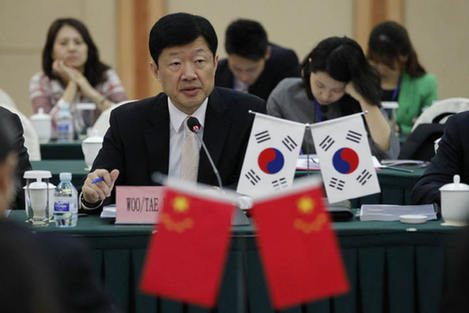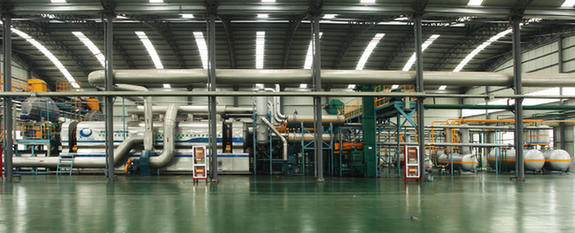Bright Prospects for China-South Korea FTA
|
 |
|
On September 22, 2014, the 13th round of China-South Korean FTA negotiations kicks off in Beijing. Photos by Xinhua |
Forge a High-standard Asia-Pacific FTA
At the 2014 Meeting of APEC Ministers Responsible for Trade, China’s proposal to carry out feasibility studies on establishing an Asia-Pacific free trade area was echoed by the ministers of trade and representatives of 21 member nations. The Asia-Pacific free trade area, first proposed in 2006, has been an important goal for APEC. However, fettered by multitudinous members at different development stages, the matter has made no substantial progress even after eight years of discussion.
Multiple FTAs currently exist in the Asia-Pacific region. They include the TPP and the Regional Comprehensive Economic Partnership (RCEP), initiated by ASEAN, which China, Japan, South Korea, Australia, New Zealand, and India have joined. Owing to different levels, standards, contents, and rules, however, these FTAs are fragmented. To advance establishment of an Asia-Pacific free trade area, therefore, the related parties must consider how to coordinate the diversified FTAs in the region.
After the U.S. introduced the TPP, a proposal was raised to connect the TPP with the RCEP. Dominated by the U.S., the TPP has high negotiation standards. The RCEP, meanwhile, is formed of ASEAN countries with China as an important participant, and features comparatively low standards. Hence, certain commentators hold that the two FTAs could run in parallel in the future Asia-Pacific free trade area, either through China participating in the TPP or the U.S. joining the RCEP.
However, others regard the TPP and RCEP as incompatible, because they are two disparate systems. The focus of the RCEP is on protecting traditional free trade interests by lowering tariffs, removing non-tariff barriers, strengthening interconnection and communication, and coordinating the related countries’ trade measures. To facilitate investment, it adopts the positive list based on national treatment after admission. In contrast, the TPP guarantees the interests of a liberalized global economy in addition to those related to trade, and promotes measures to ensure unified rules. In practical operations, the TPP aims to realize higher-level liberalization of trade in service and to facilitate investment with national treatment before admission, guided by a negative list. Therefore, it is possible to upgrade the relatively low-standard FTA to the level of the high-standard one, but not to combine the two.
China is of course going all out to advance to the high-standard governance system. The China (Shanghai) Pilot Free Trade Zone is China’s major step towards adapting to the new trend of global economic and trade development. China-U.S. talks on investment and trade agreement also feature the national treatment before admission plus negative list mode. China-South Korea FTA negotiations cover a wide range of fields including trade in service, intellectual property, finance, and investment. Hence, in this sense, the establishment of the China-South Korea free trade area will promote bilateral trade and contribute to the future high-standard Asia-Pacific free trade area, and even to a global free trade area.
YU YINGLI is a research fellow of the Shanghai Institute for International Studies.

